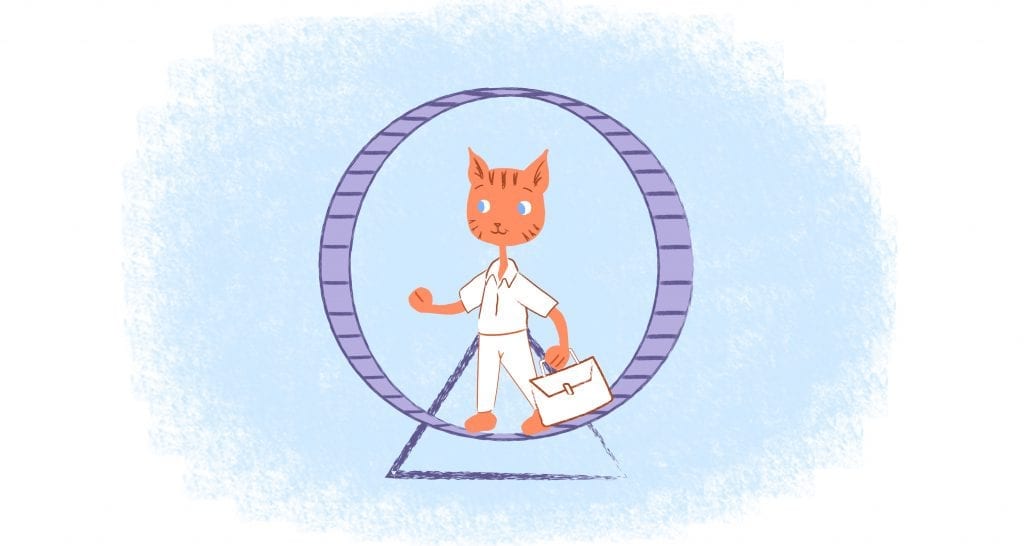

In 2017, the average employee spent 31 hours in unproductive meetings. What’s worse, 47% of those employees say that meetings are the ultimate waste of time. Plus, 91% of them said they daydream during meetings instead of collaborating and working together. It seems that not many people know how to have an effective meeting that everyone enjoys.
If your business is holding meetings, you probably want to know if they are a waste of time, or how to make sure they aren’t. Here are four ways to tell, and three tips for changing how you do meetings so they are more effective.
Participants will tell you how to have a meeting
You’ll know if your meeting was a waste of time just based on the simple feedback of the participants. If your employees or contractors say that the meeting could’ve been covered in an email, didn’t apply to them, or just added another “to-do” to their day, your meeting was probably a waste of time. While they usually won’t come right out and say that it was, you can always ask for feedback.
Were the meetings productive? Did the meetings meet participants’ needs? Was there value in the meetings? If not, time to stop having meetings that aren’t worth it. Instead, this is an opportunity to learn how to have a meeting that is productive for everyone.
People are confused when it’s over
If you’re holding meetings and the participants are confused once they’ve concluded, you’re either doing it wrong or wasting energy on a meeting when you shouldn’t be.
A good way to tell if this is happening is by noting how much you have to follow up with employees afterward. This could take the form of having to send them emails or meet with them one-on-one.
Meetings are supposed to be a way for team members to collaborate and clarify projects and tasks, receive status updates, or allow people to discuss any changes, frustrations, or accomplishments. Too much follow-up could be a sign that the meeting wasn’t productive and that your employees are still unclear on any of those things.
A few follow-ups may be necessary. But, if you have to do it constantly, it means that time is being wasted somewhere along the way. And, that’s not how to have a meeting.
To cut down on confusion and need for follow up, outline specific points that should be covered during a meeting, and share that with everyone. Be vigilant along the way that those points are being covered. Then, thoroughly check in with participants to make sure they understand what is being discussed or decided.
They’re taking too long
The average meeting can last 50 minutes or longer, and yet, 65% of senior managers say that they feel meetings keep them from their work and are unproductive.
Twenty to thirty minutes is a more desirable length to have a meeting. Not only can your team discuss quite a few topics during that time, but you’ll also save at least 30 minutes in many cases. This adds time back into your day and your team members’ days as well.
Now that you know how to tell if your meetings are a waste of time, here are three more tips to ensure that your meeting isn’t a waste of time, for you or your team members.
Only have necessary meetings
Before holding an effective meeting, it’s important to ask yourself if it’s truly worth having. Can you cover what you need to say in an email? Can you have a “standing” meeting (a quick 5-10 minute informal meeting)? Does the whole team need to be there, or just the most relevant members for the project at hand? These questions can help you decide if a meeting is truly required, or a waste.
Ask for input
Asking for feedback after meetings is helpful, but asking for input beforehand to see if a meeting is worth having may be a better option. This can save you and your employees precious time. It also gives you data around what employees feel is important or unimportant when it comes to holding team meetings.
You can also have team members share their ideas and thoughts on the meeting while it’s taking place. Even if part of your team is remote, you can still make it easy for them to participate by using tools like GoWall or Voicera.
Choosing a note based system like GoWall lets you see individual comments from attendees, which can be anonymous or not, complete with a record of who agrees or disagrees with that feedback. It all happens in real time during the effective meeting.
You can also try an AI-backed recording system like Voicera to take an audio snapshot of the effective meeting. It helps you hear loud and clear which team members feel comfortable enough expressing support for different proposals and ideas.
How to have an effective meeting: Keep it concise
Keeping your meetings shorter and on topic will encourage participation from your employees. People are able to focus better for short periods so that will increase the effectiveness of participants too.
As mentioned, having an agenda sent out before the meeting can help you stay on the task at hand. But also remember to let all team members add in their thoughts, without dragging out the meeting.
While having meetings has been a way of business life for years, it doesn’t have to waste your time, or your company’s time, anymore. Now, your team can be productive, save time, and focus on the most important tasks and topics at hand.











Max Palmer
I'm Max, and I love helping businesses we work with expand their businesses online. Growth potential is what we strive for! I help with press, productivity and overall business needs for business owners.